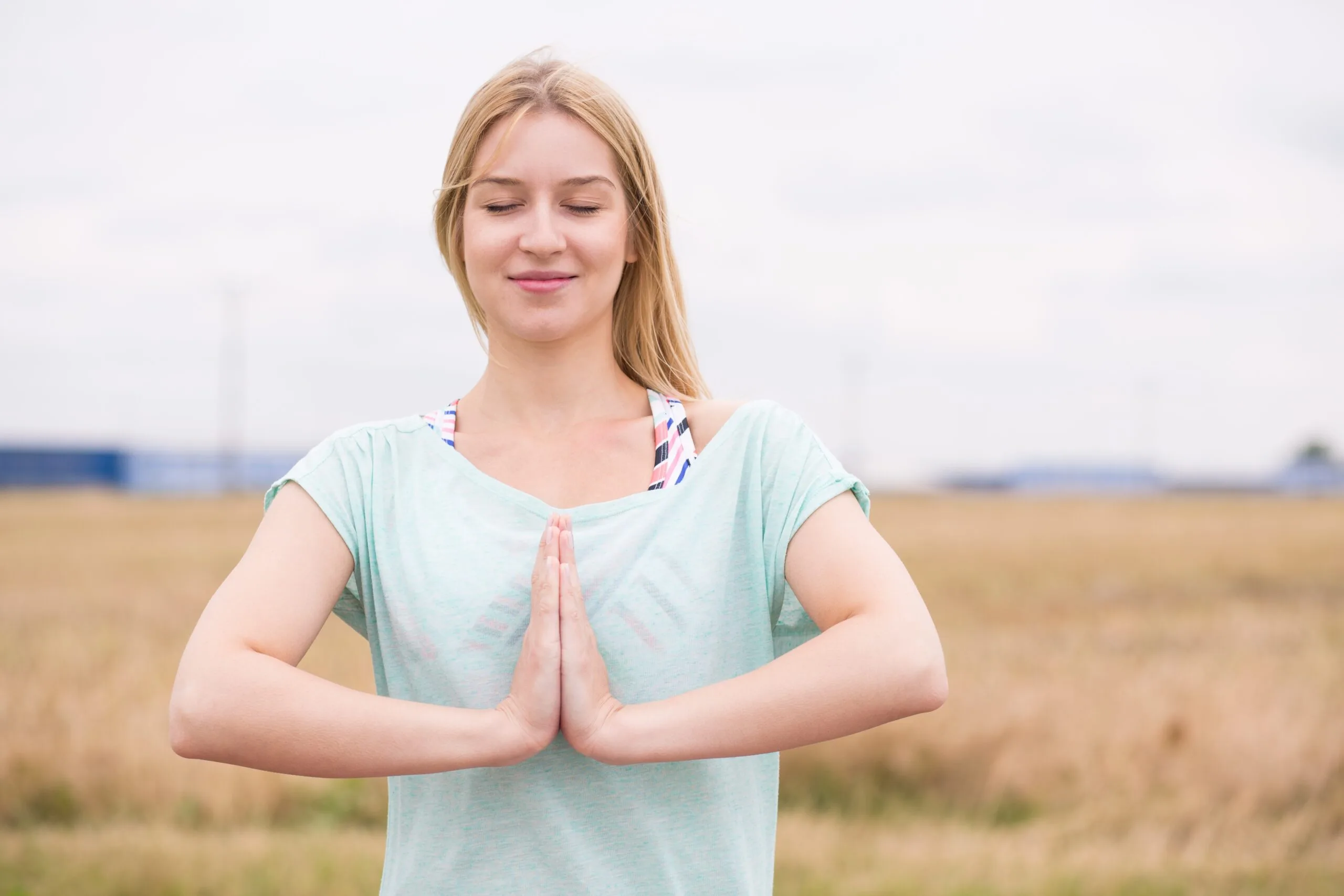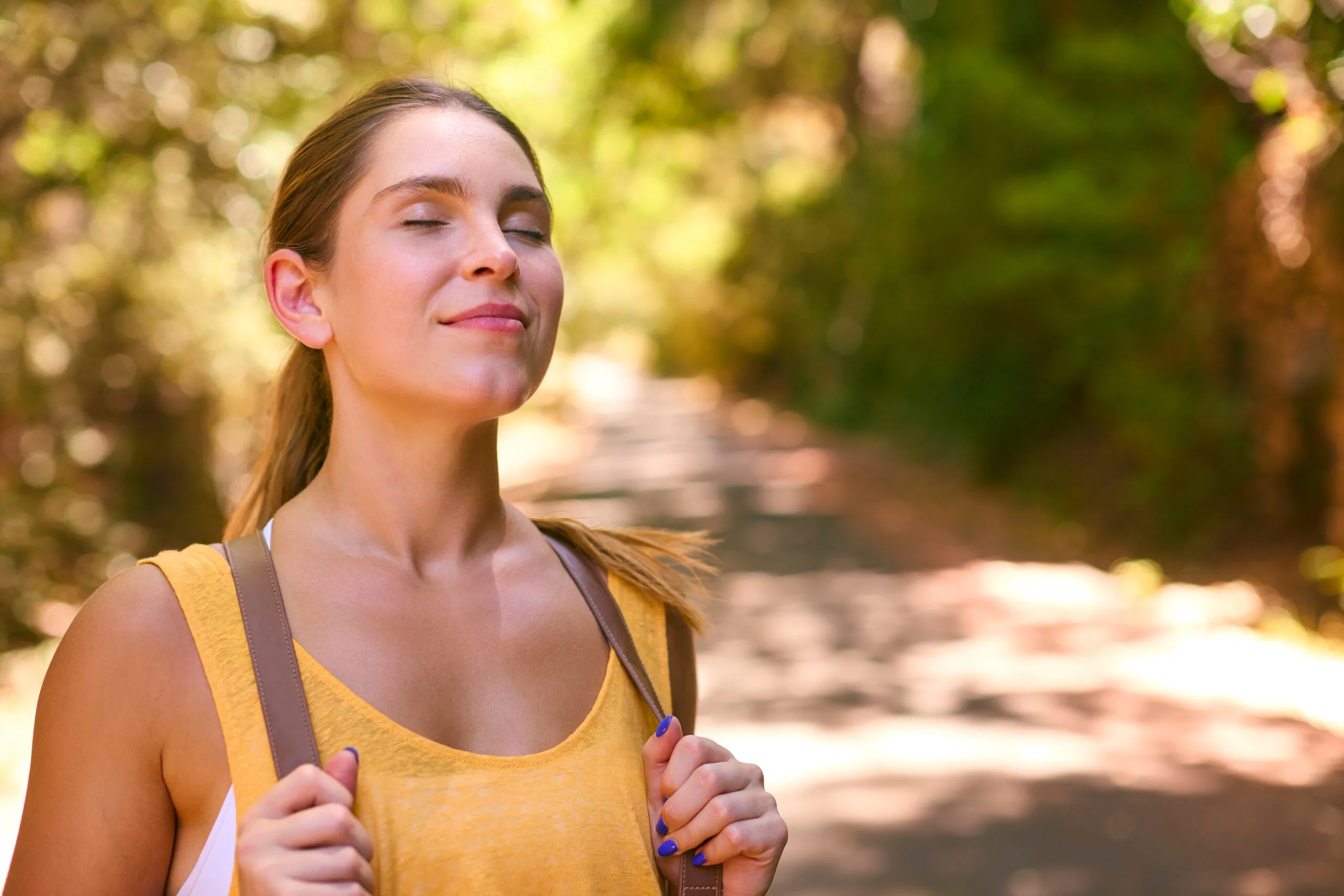If you’re pressed for time and have a busy mind that just doesn’t stop chattering, you probably think meditation is not for you – but you’d be wrong.
Lots of people assume meditation is about clearing the mind, then get frustrated when they find their brain just won’t switch off, says psychologist and meditation teacher Carly Dober.
And that’s not the only misconception that stops people from reaping the rewards of a regular meditation practice.
‘People might incorrectly assume that you have to be totally Zen, have no thoughts coming in, no distractions, and if that doesn’t happen you’ve failed, when, actually, it’s the complete opposite,’ Carly explains.
‘We know that the brain is a thinking machine, and it’s meant to have many thoughts. The practice is about coming back to the meditation even when your thoughts wander.’
Read more: 15 ways to relax

Meditation means to spend time deliberately focusing your attention on something, such as your breath, an object or a phrase that you repeat. Traditionally, it was practised for spiritual enlightenment, but in modern times meditation is often used for reducing stress and improving focus.
As well as helping people manage depression and anxiety better, meditation has physical health benefits, including lowering blood pressure, improving sleep quality and assisting in managing chronic pain.
There are emotional health benefits too. Carly says people who meditate regularly learn to speak to themselves more kindly and regulate their emotions better, so they can handle stressful situations more calmly, instead of flying off the handle.
Best of all, meditation doesn’t take up much time. ‘Modern life is so busy, so when people hear about having to find time to slow down and do something new, they might feel a bit overwhelmed,’ Carly says.
‘The beauty is, you can do a quick one-minute meditation or mindfulness practice. It doesn’t have to be a big part of your day or a big time commitment.’
If you’re new to meditation, here are Carly’s top tips for getting started…
Start slowly

Instead of attempting a 30-minute meditation right off the bat, Carly suggests heading over to YouTube and searching for ‘quick guided meditation’.
‘Don’t be put off if the first one or two you try aren’t for you,’ she says. ‘Experience it and see what you feel like before, during and especially after. The real tell is: if you’re feeling seven out of 10 anxious or frazzled, and then after a quick meditation you feel maybe five or four out of 10, that’s a significant decrease.’
You could also try a free app, such as Smiling Mind, or a paid app that offers a free trial, such as Waking Up or Headspace, then subscribe if it’s right for you.
Make it active
If you find it hard to sit still, mindfulness might suit you better than meditation.
Carly suggests going for a ‘mindful walk’ without your phone or headphones.
‘You’re paying attention to the birds you can hear, the colours you can see, the things you can smell, the leaves or the flowers you can touch. These can be quite active experiences,’ she says. ‘You don’t have to be sitting there cross-legged and Zen, unless you want to.’

Make it regular
Just like one gym session a month won’t bring instant results, meditating regularly is what builds your ‘mental muscle’, Carly says.
‘I challenge people to stick to it every day – or every second day – for six weeks.’
Finally, she suggests evaluating your experience: ‘Will I continue with it? Or is it not for me? You can then try something else.’
Mindfulness vs meditation
While meditation is a more formal practice, usually done while sitting or lying down, mindfulness is more active; it can even be done while you’re walking. ‘Mindfulness is more about being in contact with the present moment, and you can do that anywhere, anytime. Both can induce similar states of calm and mental wellbeing,’ Carly says.

